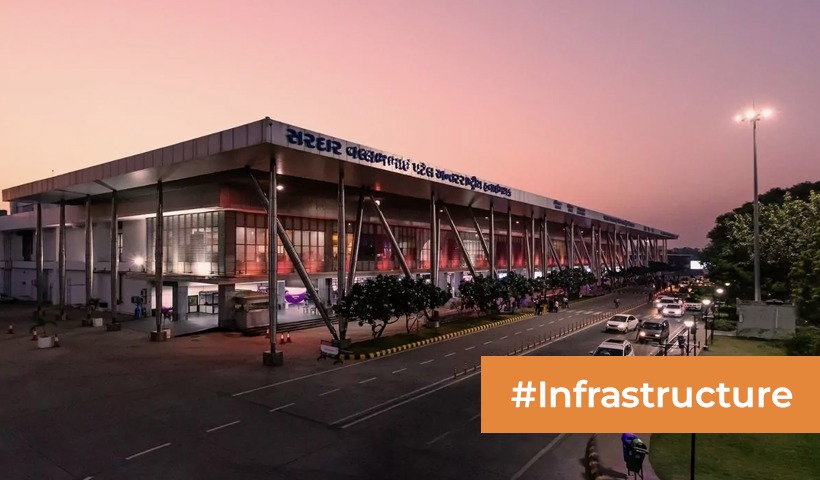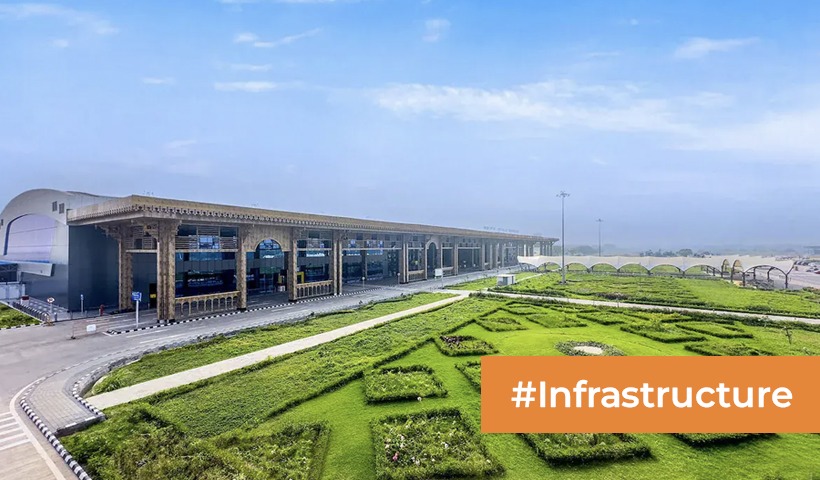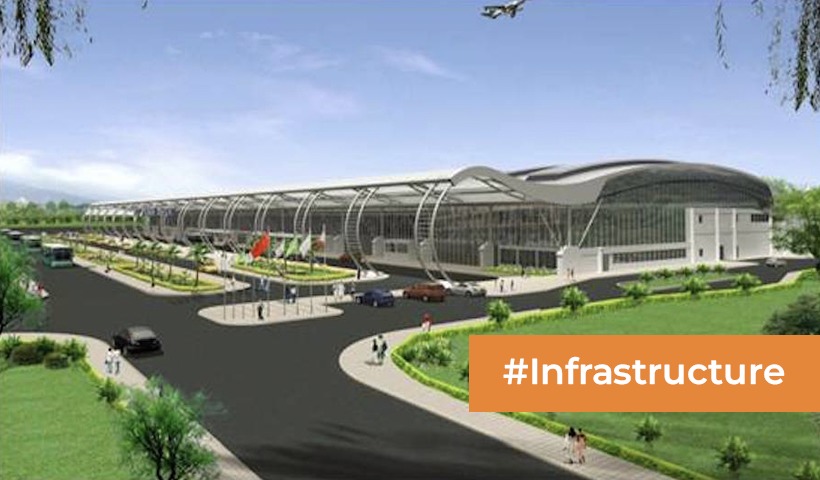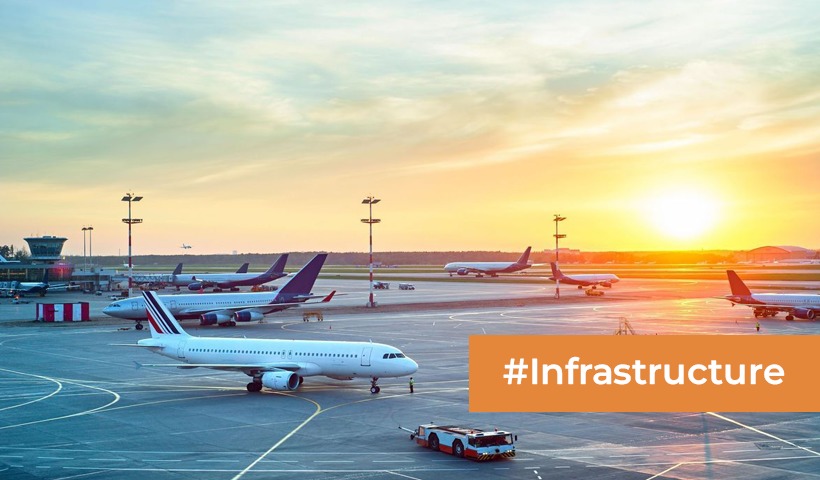Navi-Mumbai international airport digital design unveiled: an architectural masterpiece in the making
In Mumbai’s Kopra-Panvel district, Navi Mumbai International Airport is now under construction and will be one of the world’s largest greenfield airports with two parallel runways. Mumbai will be the first Indian metropolis to have multiple airports once the project is completed.
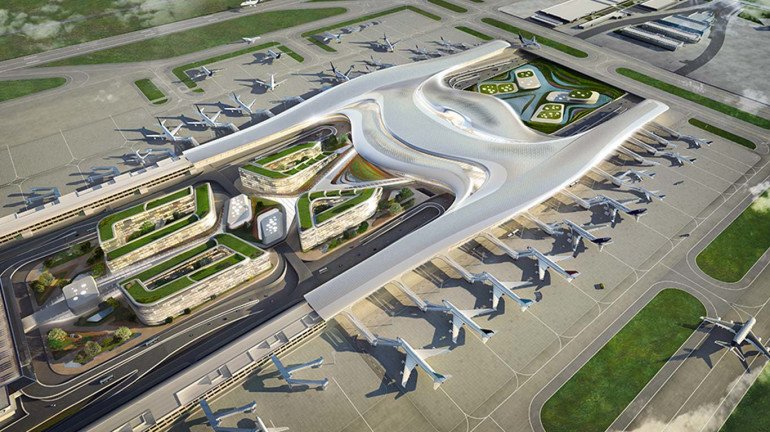
CIDCO and GVK Group-led Mumbai International Airport Limited (MIAL), which has been building the airport as a partner, have visualised the Navi Mumbai Airport for the central government and the Maharashtra government in a video format, you can find here.
The proposed airport’s terminal design is inspired by the lotus flower, which represents purity and majesty. The airport was created by Zaha Hadid, a worldwide renowned architectural studio that also created Beijing’s huge Daxing International Airport. A cluster of three interlinked multi-level terminals will be constructed around a landscaped central courtyard as the core terminal complex.
The centerpiece of the Navi Mumbai International Airport will be the Central Terminal Complex, which will consist of three interlinked multi-level terminals arranged around a landscaped central plaza with a multimodal transportation hub.
When fully operational, the design depicted consists of two parallel runways and is expected to service 90 million passengers per year. The airport will serve both domestic and international traffic and will be equipped with next-gen technology.
The NMIA is designed to have two entrances; the eastern one will handle all traffic related to cargo, MRO, and general aviation, while the western entrance maintains passenger traffic. The NMIA will be built in four phases, with two parallel runways capable of simultaneous operations. The central complex will have nine lanes split into high-speed expressways, suburban rail metros, and water transportation connections. The local seaport at Navi Mumbai will also benefit from such infrastructure.
To make transportation easier and faster, the passenger terminal is divided into two floors. The few level changes combined with the well-organized sections result in a compact terminal with short walking distances with logical navigational piers for departure gates. The lotus petal-like beams that run throughout the airport will undoubtedly leave an impression on the numerous international travelers that will pass through. Incoming travelers are greeted with a similarly straightforward and intuitive arrivals experience and are processed in a pleasant and stress-free setting.
How will the new airport impact the economy?
The Navi Mumbai Airport structure and design elements are certainly ambitions, to say the least. The integration of fast transport through highways, rails, and the metro, not to mention a second dedicated entrance for cargo and goods, will ensure the smooth transition of 90 million passengers per year.
An Airport of this magnitude will have a huge impact on the economy, especially at the local level. During construction, thousands of jobs will be created; prospective business owners will start buying up the land near the airport if they haven’t already for hotels, restaurants, entertainment, and taxi services. To handle the utility aspects of the airport, meaning water, electricity, drainage system, and such, the local infrastructure will undergo massive change.
CIDCO has already decided to move along with its plans to auction off its Navi Mumbai land parcels located in Kalamboli, Kharghar, and New Panvel for residential and commercial purposes. At this rate, Navi Mumbai will be transformed from a sleepy neighborhood with no nightlife into a bustling metropolitan area with better cell towers, roads, shops, flats, and branch offices from countless companies and banks.
All this infrastructure near the airport is bound to have an impact on the real estate side of things. As the airport nears completion, the local area will get more developed, accessible, and comfortable to live in, which in turn light up the real estate market. The average cost of land has already shot up, rivaling even Mumbai since the construction of the airport was announced. And it will continue to do because the few large developers in the area are hiking up the residential prices based on the future demands of a market that doesn’t yet exist. The prices may yet again vary when the Navi Mumbai metro system is fully up and running, hopefully by the end of this year.
In the not too far off future, the attractive infrastructure and better-planned cities in Navi Mumbai will make it more desirable than the densely populated Mumbai or Thane.
Disclaimer: The views expressed above are for informational purposes only based on industry reports and related news stories. PropertyPistol does not guarantee the accuracy, completeness, or reliability of the information and shall not be held responsible for any action taken based on the published information.

